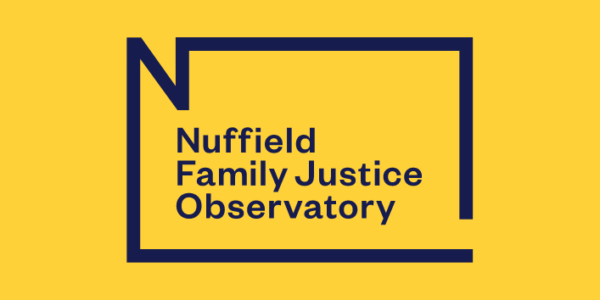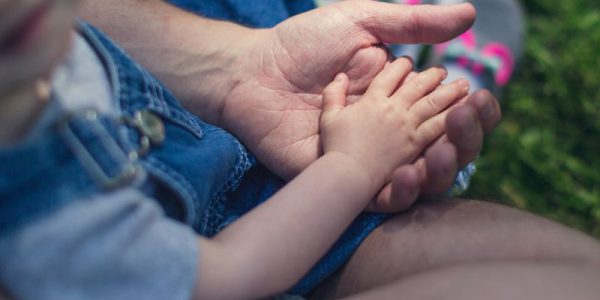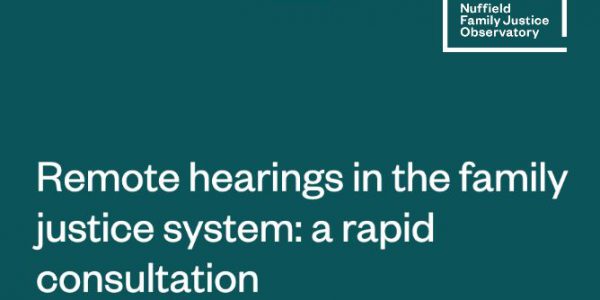The impact of coronavirus (COVID-19) on children and families at risk of abuse is likely to be severe.
In recent weeks and months, reports from around the world highlight a surge in domestic abuse as those living with abusive partners are put at increased risk by lockdown rules. The nature of the COVID-19 pandemic—trapping victims* with their abuser during the lockdown—has created particular challenges in accessing confidential support, emergency legal protection as well as advice and refuge, where this is needed.
In the UK, multiple support services have reported a surge in calls to helplines, while the Metropolitan police has made 4,093 arrests for domestic abuse offences between the beginning of March and the end of April—an average of about 100 a day—up 24% compared with the same period in 2019. Around the world there has also been significant disruption to support services available to survivors, witnesses and perpetrators according to a Centre for Justice Innovation tracker.
This raises questions about how the family courts in England and Wales, already coping with an incredible backlog of cases, will be able to deal with the predicted surge in new applications as lockdown slowly eases. Recent data suggests applications for domestic abuse injunctions in the family courts have either remained at usual levels or have, in certain inner-city areas, significantly risen. Renewed focus has been placed on finding innovative ways of supporting victims and delivering family justice in this socially distant and increasingly virtual world. As the President of the Family Division, Sir Andrew McFarlane noted in his recent guidance paper:
“We have reached a juncture in the Family Court’s journey through the COVID 19 crisis when it is both possible and necessary to take stock and to consider the road ahead.”
During this time of reflection and taking stock, insights and innovative practice from jurisdictions around world, including those with radically different systems and structures to our own, may help inform discussions and shape the way the family courts and wider services support domestic abuse victims in post-COVID England and Wales.
1. A new challenge for family justice: Remote hearings and associated challenges
Following the outbreak of the COVID-19 pandemic and the introduction of social distancing measures, the family courts in England and Wales have rapidly adapted to using telephone and video hearings. As our recent consultation on remote hearings suggests, urgent cases are still being heard, remotely or in person if required, and occupation orders (which regulate how a family home is used by the occupants and can in many cases require that someone, typically the abusive party, leaves the property completely) and non-molestation orders (which deal with abusive, harassing, or threatening behaviour and can restrict how one person contacts another and whether they do so at all) can be obtained to protect victims as well as those who have already experienced abuse.
Responses to our consultation revealed a number of concerns regarding victim participation in virtual hearings, including the lack of specific protocols and the management of remote hearings. Examples were given of victims waiting on the phone line for the hearing to begin with the perpetrator being the only other person on the line, and of victims feeling distressed by the hearing effectively taking place in their homes.
There were also positive experiences identified, with some victims noting how remote hearings meant cases were being dealt with swiftly. Others noted that these new processes facilitated a quick and straightforward process of obtaining a non-molestation order, and others deemed it to be a less stressful experience than attending court in person, although there was some concern about the delays in listing full hearings.
Changes have also been made to the ways in which victims can seek protection from the family courts. Usually a person applying for a domestic abuse injunction must do so in person, but from April the courts have provided guidance on how to apply online for injunctions as well as by post or email. Those working with victims in court have suggested that this is an important development for victims of abuse who cannot afford a solicitor or who do not qualify for legal aid. However, as highlighted by the Law Society, many victims may struggle to find a safe space away from their abuser in order to apply for an emergency injunction.
2. What can international practice tell us?
Over two weeks in May 2020 we sought feedback from those working in family courts and support services in Australia, Canada, Denmark, Ireland, Spain, New Zealand and the United States to explore how their systems were supporting domestic abuse victims during the lockdown.. The Centre for Justice Innovation has carried out a similar consultation looking at the impact of COVID-19 on wider support services.
Prioritising domestic abuse cases
In all the jurisdictions we looked at court systems have prioritised domestic abuse cases in the lockdown. Child protection and family violence proceedings, such as orders of protection, are considered priority cases. All respondents noted that they had moved, in some capacity, to a remote court system, allowing cases to still be heard despite court premises being closed.
In Australia the central family court has established a dedicated list to deal exclusively with parenting and safety issues which have arisen from the COVID-19 restrictions. The family court of Australia and the federal circuit court are now hearing lockdown-related cases in response to an increase in urgent applications for hearings. Applications that are eligible to be dealt with through the COVID-19 list, especially those involving issues of risk and family violence, will receive immediate attention and will be triaged by a dedicated registrar who will assess the needs of the case and allocate it to be heard by a judge within 72 hours of being assessed.
New powers awarded to children’s services
In Denmark, children’s services have been given new powers to make ‘non-intrusive’ decisions about a child. Respondents in Copenhagen reported that in light of the rise in domestic abuse cases, especially in relation to children, their Family Law Office (which usually prepares cases for family courts and handles mediation) has been given new powers to make temporary‘non-intrusive’ decisions about a child when there is an urgent risk to the child’s safety, well-being or development.
New powers and responsibilities awarded to police
In most jurisdictions police have responded to domestic abuse calls and reports as they would have before lockdown. However, in some countries police have been given new or altered powers to help protect those at risk of abuse. In Oklahoma, for example, police have been encouraged to use ‘afterhours’ protective orders (for all domestic abuse cases, not just those involving children), usually saved for when the court is closed for the day, hence the ‘afterhours’ label. This allows certain categories of people who would be seeking a protective order to contact the local police and the police then facilitate getting an emergency protective order.
In England and Wales, some police forces have become more proactive in their approach to domestic abuse, contacting survivors in case of escalation.They have also been increasing text messages to survivors due to concerns about the risks associated with isolation. Some forces have also been doing live chats and have increased their links with local services and voluntary sector. Some forces are also working with local housing authorities re providing accommodation for those removed from accommodation under court order.
Re-evaluation of the use of integrated, therapeutic and problem-solving courts
According to the President of the Family Division, allegations of domestic abuse are made in approximately 60% of family cases. Although it should be stressed that this figure is an estimate—it has been acknowledged by the Office for National Statistics and others that the systematic recording of domestic abuse allegations in national administrative data still needs to be improved. To provide protection and consistent support for these families, renewed calls have been made to return to the integrated court model. Certainly, the government appear to see some value in some form of this model, with a commitment of £5 million funding from the Chancellor in the Spring budget for a pilot.
Respondents from Canada, New Zealand and the USA argued for the use of integrated domestic abuse court models to help support victims of domestic abuse, and suggested they may be an effective way of supporting the surge in cases as a result of the lockdown. International evidence does suggest that specialist courts can play a vital role in increasing the victim’s feelings of safety, but specialist domestic abuse courts are not necessarily integrated courts.
Describing the integrated model, however, remains difficult as the structure and working of these courts differ depending on the jurisdiction, the court and often the individual judge. A recent review of Integrated Domestic Abuse Courts (IDACs) by the Scottish government usefully describe them as ‘a court in which a single judge hears both criminal and civil cases relating to one family, where the underlying issue is domestic abuse’. They usefully distinguish these courts as:
- The simple IDAC model: courts that deal solely with summary-level domestic abuse and concurrent family law cases; but which do not have the capacity to deal with contested criminal trials, child protection, divorce or property disputes. [This model has been trialled in Croydon and is still in use in Ontario, Canada].
- The complex IDAC model: courts that deal solely with domestic abuse and concurrent family law cases, but also have the capacity to deal with divorce, property disputes and child protection. [Forms of this model are in use in Toronto, Canada as well as Vermont and New York, United States].
- ‘One Family One Judge’ problem-solving courts: integrated courts which use the ‘one family, one judge’ model to address a variety of cases, including but not limited to: domestic abuse, substance abuse, mental health, and juvenile offending. Domestic abuse is one of a number of different case types handled by the court and is not compulsory for entry into the court system.”
The empirical evidence for the efficacy of such courts remains somewhat limited. Indeed there has been only one pilot of the IDAC model in England and Wales which took place over 18 months in Croydon from 2006 to 2007.The Croydon Independent Domestic Violence Court (IDVC) (the terminology used to describe these courts has changed in recent years with the wider shift from ‘domestic violence‘ to ‘domestic abuse’ as the most commonly used term) pilot is an example of the ‘simple IDAC model’, in that it was established to deal with summary-level criminal charges where there was concurrent family proceedings in private law or potentially public law. Despite expectations for around one case per week, only five cases were entered into the Croydon IDVC over the 18-month pilot period. The evaluation identified a number of potential reasons for this, including confusion over criteria as well as a lack of buy in from local practitioners and services. The low number of cases and the subsequent ending of the pilot means that we do not yet know whether outcomes are better for families after going through an integrated court system. Even though the landscape of family justice has changed since the piloting of the Croydon IDVC it is important that any new pilot learns from the challenges and barriers identified in the evaluation of that pilot.
It is important to distinguish between specialist courts (which most domestic abuse courts so far have been) and integrated domestic abuse courts with other problem solving approaches such as those used in Family Drug and Alcohol Courts (FDAC) as they have been developed in England. This is a problem-solving court approach in care proceedings which monitors treatment and capacity to change, and incorporates a relationship-based, trauma informed approach to working with parents. Given the positive outcomes associated with FDAC in England, there are perhaps lessons to be learned from their approach to working with families. Cases coming into FDAC frequently involve domestic abuse alongside substance misuse and the FDAC approach can help with some, and possibly many, domestic abuse situations. FDAC multi-disciplinary teams have good examples of working with men and women on domestic abuse—usually separately—helping them to think about why they abuse, or why they tend to end up in abusive relationships. Some domestic abuse situations will be too risky for this approach, however, while for others it has the capacity be very helpful.
3. Taking stock
There is always the danger that the spotlight of concern in the family justice system shifts from one discrete issue to another without addressing the broader context. Even before the pandemic, concerns had been raised by applicants as well as those working in the courts about how well the family court system is set up to effectively deal with domestic violence cases—with concerns raised only this year about the ‘outdated’ views held by some of the judiciary. Support services have also argued that the family court system fails to offer adequate protection for victims of domestic abuse, with Women’s Aid arguing that family court proceedings serve to re-victimise and re-traumatise women and children after separation from an abuser. In light of these concerns and others raised by some MPs, the Ministry of Justice has set up an expert panel to explore how the family courts protect children and parents in cases of domestic abuse and other serious offences. The findings of the panel were published yesterday.
There are spots of positive practice already emerging. Findings from our recent consultation highlight the ability of the family justice system to quickly shift its practice to help support victims of domestic abuse. Remote hearings have provided quicker legal support to victims, and if logistical safety concerns can be overcome, may be a viable route for some domestic abuse cases as social distancing rules are eased and physical courts begin to reopen.
Despite these positive steps, and ones promised by the Domestic Abuse Bill, concerns about the way in which domestic abuse cases are heard and victims are protected remain. Marianne Hester’s Three Planet Model, —describing how the response to a family experiencing domestic abuse differs greatly depending on whether you work in domestic abuse, children’s social care or within the family court system—appears as relevant today as it did almost 10 years ago. Each ’planet’ has its own way of framing the abuse, as well as its own language and methods for dealing with and supporting those involved. Even to the extent that who is held responsible for ending or resolving the abuse differs. According to Hester’s model:
- “On the ‘domestic violence’ planet, domestic violence is considered a crime. The father’s behaviour is recognised by the police and other agencies as being abusive to the mother, so he could be prosecuted for a criminal or public order offence. On this planet the focus is on violent male partners who need to be contained and controlled in some way in order to ensure that the women and children are safe.
- Whereas on the ‘child protection’ planet, the emphasis is on the welfare of the child and its carer. In order to protect the children, social workers are likely to insist that the mother removes herself and her children from the violent relationship. If she does not do so, it is she who is seen as ‘failing to protect’ and the children may then be removed into the care of the local authority.
- And finally, on the ‘child contact’ planet the focus is based on the idea that children should have contact with both parents, and as such an abusive father may still be deemed a ‘good enough’ father, who should at least have contact with, if not custody or residence of, his child post-separation”.
There are different pathways the family justice system can take to support domestic abuse victims at this key juncture. It is clear that that in any change to the system there needs to be a renewed commitment to address the disparities in the ‘three planets’ and so ensure integration in responses. This is a considerable challenge and the further piloting of an integrated court system may be one of achieving this. It requires a better understanding of the dynamics of domestic violence and a co-ordinated approach by all the agencies, services and court systems involved to ensure victims are adequately protected in proceedings. As has been argued by Hester, it is vital that “the gap is closed between ‘violent men’ on the one hand and ‘fathers’ on the other, so that violent men can be dealt with both as violent fathers and as perpetrators of domestic violence”.
Further considerations of the problem-solving approach developed in FDAC may also be a useful option, where a specialist team work with the parents, and the network, to provide dynamic assessment to inform court decision making. Time and space are also key considerations here. As has been shown with the early roll out of FDAC, and in the pilot of the Croydon IDVC, time must also be afforded to any new service to properly bed in and garner the support of local services before any judgement on its efficacy can be made.
Integrated or problem-solving courts are certainly not the only answer to this complex problem. What is clear is that this is a world-wide challenge. As we move forward and look for new and innovative ways of helping victims of domestic abuse, we should continue to exchange ideas with jurisdictions from around the world.
*As has been suggested by organisations such as RAINN (Rape, Abuse & Incest National Network), we use “victim” when referring to someone who has recently been affected by sexual violence; when discussing a particular crime; or when referring to aspects of the criminal justice system. We often use “survivor” to refer to someone who has gone through the recovery process, or when discussing the short- or long-term effects of sexual violence.










